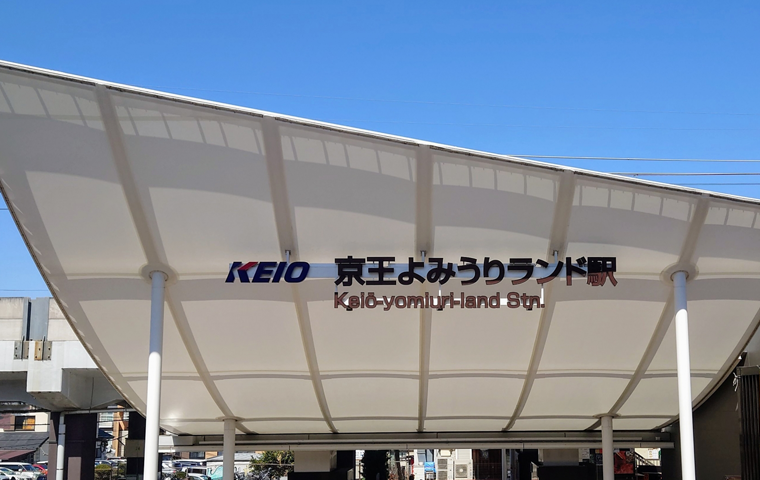PokéPark KANTO to Open in Tokyo in 2026
Related Articles
“PokéPark KANTO” to Open at Yomiuriland — A Landmark Collaboration Between Pokémon and Yomiuri Group
On November 11, 2025, a groundbreaking announcement was made in Japan’s entertainment industry—and in the global history of pop culture. The Pokémon Company, Yomiuriland Co., Ltd., and The Yomiuri Shimbun Tokyo Headquarters jointly announced the establishment of PokéPark KANTO LLC, a new joint venture company that will launch PokéPark KANTO, the world’s first permanent outdoor Pokémon-themed facility. The park is set to open on February 5, 2026, within the grounds of Yomiuriland, a major amusement park located in Inagi City, Tokyo. Ticket sales are scheduled to begin on November 21, 2025, ahead of the grand opening.
This announcement marks far more than the debut of a new theme park. Its core significance lies in the fact that this will be the first-ever permanent outdoor Pokémon attraction. Previously, the temporary PokéPark event held in Nagoya in 2005 coincided with the World Expo and operated for only a limited time. PokéPark KANTO, by contrast, will be a permanent installation, signaling a strategic shift for the Pokémon brand from one-off events to an enduring legacy attraction—on par with Disney and Universal’s major intellectual property parks. Nearly three decades after the 1996 debut of the original Pokémon games, the franchise now boasts multi-generational fan bases spanning parents and children alike. The project reflects Pokémon’s evolution from a transient pop event into a timeless cultural destination.
This initiative also represents a formidable three-way alliance between The Pokémon Company (intellectual property), Yomiuriland (venue and infrastructure), and The Yomiuri Shimbun (media power)—a partnership that has drawn global attention as a new model for Japan’s content business strategy.
A Journey into the Real-World “Kanto Region” Where Reality Meets the Game
The concept behind PokéPark KANTO is designed to evoke deep nostalgia among the global fans who grew up with the original Pokémon games. The park’s name, “KANTO,” is inspired by the fictional setting of the 1996 Game Boy classics Pokémon Red and Green, where the Pokémon phenomenon first began. But the naming is not merely symbolic. In a clever twist, Yomiuriland—the park’s actual location—sits within Japan’s real-life Kanto region, nestled amid the lush Tama Hills.
This intentional overlap allows visitors to experience the “virtual Kanto” of the games merged with the natural scenery of the “real Kanto.” The approximately 2.6-hectare site is envisioned as a “pilgrimage spot” where millennial fans (now in their 30s and 40s) can relive the childhood adventure they once embarked upon through a tiny Game Boy screen—this time with all five senses. For these fans, the “Kanto region” is nothing less than a “virtual hometown.”
The park’s design philosophy centers on creating “a space where Pokémon fans around the world can feel connected beyond borders of nation, region, and language.” Unlike traditional theme parks, which depend heavily on language for shows and signage, PokéPark KANTO seeks to tap directly into the universal memory of gameplay shared by millions worldwide. The feeling of stepping from Pallet Town into Viridian Forest is a universally shared moment among fans—and the park aims to recreate that emotion as a borderless, immersive experience.
Two Worlds to Explore: “Pokémon Forest” and “Sedge Town”
The experience at PokéPark KANTO is structured around two contrasting zones that physically recreate the central gameplay loop of the series—exploration in nature and interaction in towns.
The first zone, Pokémon Forest, invites visitors into a rich, natural environment of dense trees, slopes, grassy fields, and tunnels. Here, nature itself is the attraction. Guests will walk a 500-meter trail designed under the theme “A World Where Pokémon Live,” immersing themselves in an experience that feels like observing wild Pokémon in their natural habitats. For safety, visitors must navigate 110 steps on foot—an intentional design choice prioritizing realism and adventure over convenience.
The second zone, Sedge Town (Kayatsuri Town), serves as a vibrant hub where Pokémon Trainers from around the world can gather. A fountain featuring Primarina welcomes visitors, while facilities include an exclusive Pokémon Center, a Friendly Shop, a dining area called Trainers’ Market, two attractions, a Gym hosting live shows, and a planned parade.
The park’s dual-zone structure combines two major trends in Japan’s IP-based park design: the nature-integrated, exploration-oriented approach seen in Ghibli Park in Aichi Prefecture, and the high-tech, energetic entertainment style of Super Nintendo World at Universal Studios Japan. PokéPark KANTO ambitiously merges both models into a single hybrid concept, representing the next generation of theme park design.
The New Era of IP: Japan’s Entertainment Strategy at the Forefront

The opening of PokéPark KANTO marks a decisive milestone in Japan’s macroeconomic and soft-power strategies. For decades, Japanese intellectual properties such as Pokémon, Nintendo, and Studio Ghibli have dominated global markets through screens and handheld experiences—via games, animation, and merchandise. But in the 2020s, Japan has dramatically accelerated its effort to convert these powerful IPs into physical experiences, creating real-world “pilgrimage sites” as the centerpiece of its post-pandemic inbound tourism strategy.
According to estimates by Kansai University, new attractions like Universal Studios Japan’s Nintendo area could generate an economic ripple effect of approximately ¥11.7 trillion nationwide over ten years. Similarly, Ghibli Park in Aichi Prefecture involved an investment of about ¥49 billion, establishing itself as a new regional economic hub. PokéPark KANTO represents the “final ace” in this “physicalization of IP” strategy—the deployment of Pokémon, Japan’s most powerful brand, as a permanent attraction near Tokyo.
If the 2005 temporary PokéPark in Nagoya was merely a domestic “test run,” the 2026 permanent facility is the main event—explicitly aimed at the global tourism market. In the worldwide contest for IP-based cultural influence, where Disney rules through “fairy tale worlds” and Universal through “cinematic worlds,” Japan is positioning itself as the leader in realizing the worlds of games and anime. Establishing Pokémon’s first-ever permanent outdoor park in the capital region is more than a business decision—it’s a symbolic moment showing that Japan’s soft-power strategy has entered its final form: from digital expansion to physical immersion.



